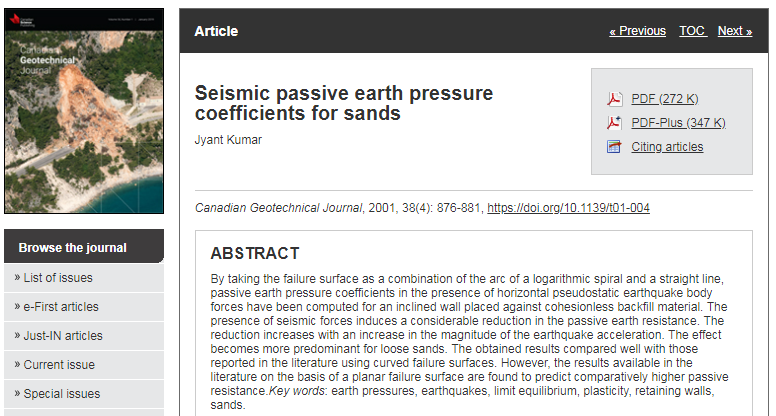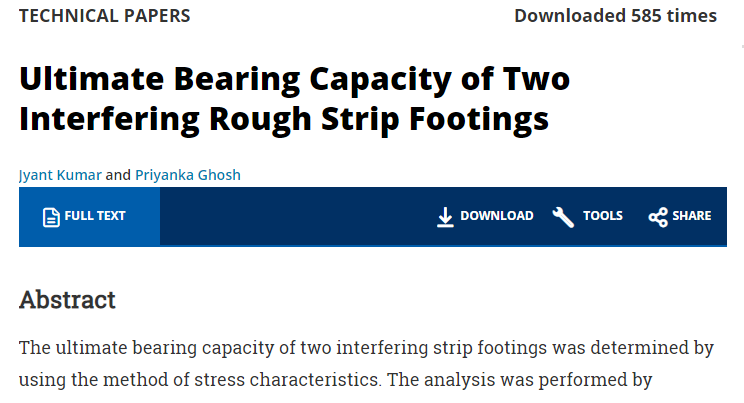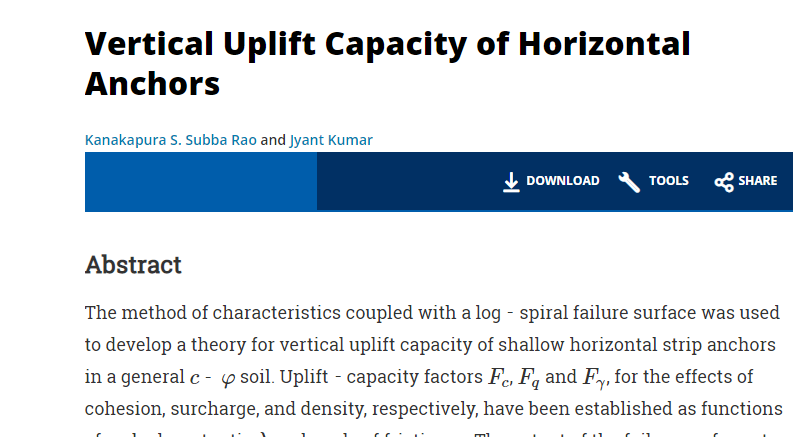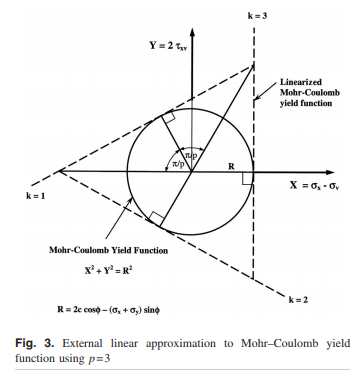Seismic bearing capacity factors for spread foundations
The effect of horizontal earthquake body forces on the bearing capacity of foundations has been examined computationally in a rigorous manner by employing the method of stress characteristics. The bearing capacity factors N c , N q and N , due to the components of soil cohesion, ground surcharge pressure and soil unit ...
Seismic passive earth pressure coefficients for sands
By taking the failure surface as a combination of the arc of a logarithmic spiral and a straight line, passive earth pressure coefficients in the presence of horizontal pseudostatic earthquake body forces have been computed for an inclined wall placed against cohesionless backfill material. The presence of seismic forc...
Ultimate Bearing Capacity of Two Interfering Rough Strip Footings
The ultimate bearing capacity of two interfering strip footings was determined by using the method of stress characteristics. The analysis was performed by choosing two different possible failure mechanisms. The variation of the efficiency factor ( ) ( ) was computed with respect to change in the clear spacing ( s ) ( ...
Vertical Uplift Capacity of Horizontal Anchors
The method of characteristics coupled with a log‐spiral failure surface was used to develop a theory for vertical uplift capacity of shallow horizontal strip anchors in a general c ‐ c ‐ soil. Uplift‐capacity factors F c F c , F q F q and F F , for the effects of cohesion, surcharge, and density, respectively, ...
Effect of Footing Roughness on Bearing Capacity Factor Nγ
The effect of interface friction angle ( ) ( ) between the footing and underlying soil mass on the bearing capacity factor N N was examined by using the upper bound limit analysis, finite elements, and linear programming. The analysis was carried out by employing velocity discontinuities along all the interfaces of the...
























